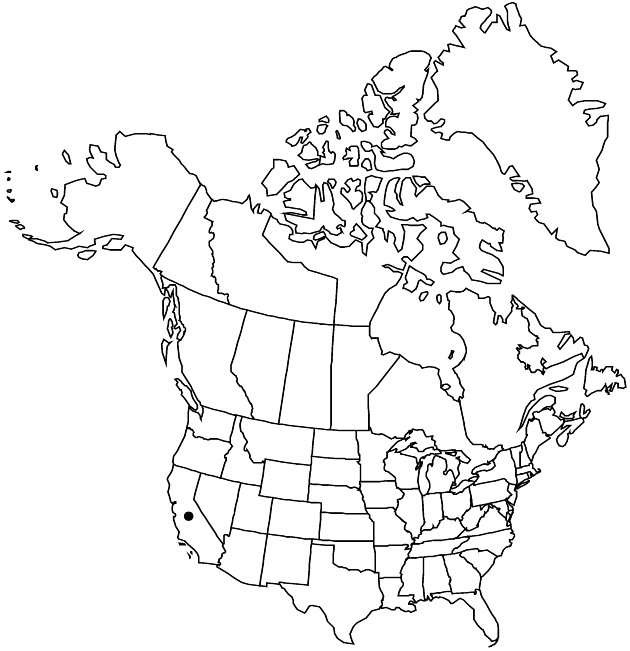Deinandra conjugens
Novon 9: 468. 1999.
Annuals, 10–50 cm. Stems ± solid. Leaves: proximal blades pinnatifid to toothed, faces ± hirsute. Heads in glomerules or well separated, in paniculiform arrays. Bracts subtending heads usually overlapping proximal 0–1/2+ of each involucre. Phyllaries ± sessile- and stipitate-glandular, mostly near proximal margins and on apices, sometimes with non-glandular, non-pustule-based hairs as well. Paleae in 1 series. Ray florets 7–10; laminae deep yellow, 3–6 mm. Disc florets 13–21, all or mostly functionally staminate; anthers reddish to dark purple. Pappi of 6–9 scales 0.5–1 mm. 2n = 24.
Phenology: Flowering Apr–Jun.
Habitat: Grasslands, openings in coastal scrub, disturbed sites, clayey soils
Elevation: 20–300 m
Distribution

Calif., Mexico (Baja California).
Discussion
Of conservation concern.
Deinandra conjugens is known from the inner South Coast and in southwestern foothills of the Peninsular Ranges, near San Diego.
Selected References
None.